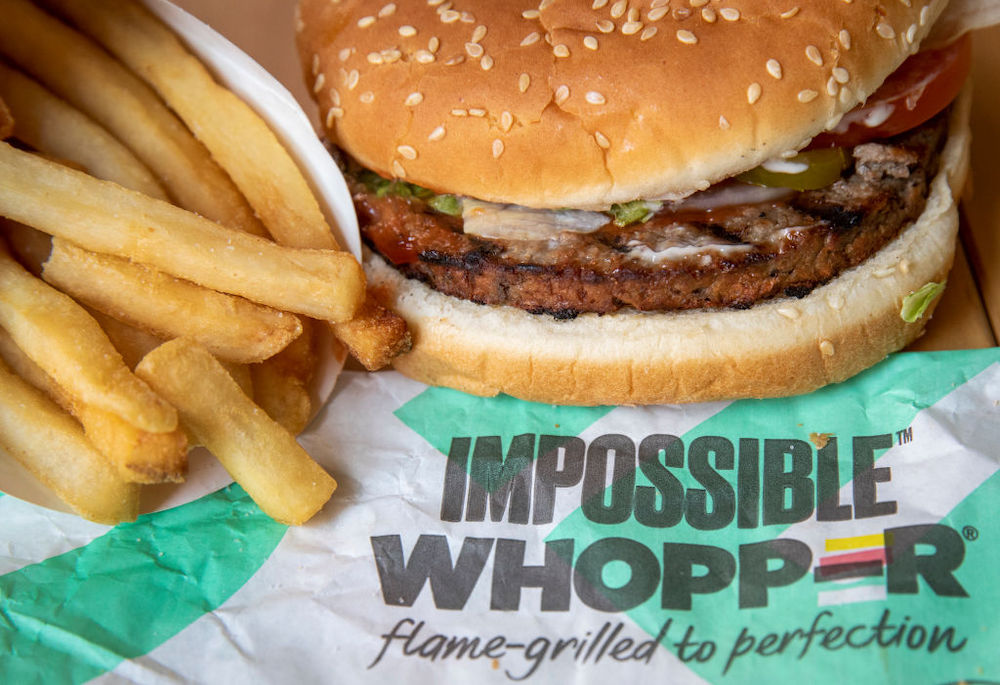- As the lockdown sends more and more people into their home kitchens, this could become the alternative proteins’ moment.
- Many people are taking a fresh look at the types of foods they buy with an eye to sustainability, health and safety.
- The market base for alternative proteins was about $2.2 billion, compared with a global meat market worth about $1.7 trillion, according to a McKinsey & Co. report. That leaves significant room for growth.
As the COVID-19 lockdown forces more people into their home kitchens, many are taking a closer look at what they eat and where they buy their food, and that may give alternative meat products a moment to shine.
The reasons to turn to alternative proteins are varied. In addition to a commitment to sustainability, they include concerns about eating healthy and food safety. And it’s the safety element that has become the most pronounced in recent weeks.
The initial epicenter of the virus appears to have been the wet markets of Wuhan, China, where wild animals including bats — the likely source of the disease — are sold as food or as pets. That’s led some people to speculate that eating animals triggered the sickness. Subsequently, Smithfield Foods’ pork processing facility in Sioux Falls, South Dakota, which handles about 4 to 5% of U.S. pork production, was forced to close because of an outbreak of COVID-19.
“What the coronavirus does from the mind of the consumer is continue to reiterate how tightly we are tied to nature,” Rob Leclerc, a founding partner of AgFunder, told Karma. Coronavirus and past outbreaks of MERS and SARS “came from the interface of human and animal,” so “it wouldn’t surprise me if there was a loss of flavor for conventional meat and commodity meat and a continued movement toward more plant-based solutions.”
Even before the crisis, the alternative-protein industry was growing. A McKinsey & Co. report, which cited data from the Food and Agriculture Organization of the United Nations, valued it at $2.2 billion last year, compared with a traditional global meat market of $1.7 trillion.
Alternative proteins come in four main types, with ingredients from plants, insects, fungi and tissue cultures. Consumers have been most interested in plant-based alternative protein sources and cultured meat, the report showed, with less buy-in for insect protein — such as turning crickets into flour — and mycoprotein from mold.
One of the most famous alternative-protein products, the Impossible Burger from Impossible Foods, is made from plants to resemble ground beef. And the company’s founder and CEO Pat Brown hasn’t been shy about making the link to safety.
“Our reliance on animals as a source of food is not only an environmental disaster, not only posing risks to individual consumers but actually is at the root of some of the largest if not the largest public-health risks to the human population,” he said in a virtual press conference last week. “So wake up, people.”
Demand for the Impossible Burger from home chefs has been so strong in recent weeks that the company announced last week that it would be selling its flagship product at 777 more stores in California, Nevada and parts of the Midwest. The move into Albertsons, Jewel-Osco, Pavilions, Safeway and Vons chains increased the number of stores carrying the Impossible Burger by more than 500%, according to a company statement.
As consumers’ concern about health and sustainability grows, the alt-protein industry can emerge from the crisis in a stronger position than other venture-capital-backed companies, Leclerc said. That’s because food is nondiscretionary.
“I have to believe that while we have capital evacuating this market, and it creates financial risk, if we do have strong companies and strong leaders and great products, they will not die in this market, they’ll thrive in this market,” he said. “We’ve seen this in 2000 and 2008. You have this case where iconic companies often emerge because those events reshaped the landscape.”
Photo by Drew Angerer/Getty Images


























